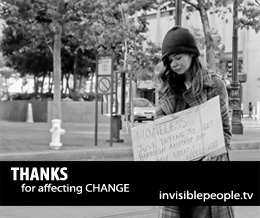Amy Sample Ward, Beth Kanter, David Neff, Holly Ross, Kari Saratovsky all work for various nonprofit organizations that have an overall goal of fostering social change for social good. The panelists “crowd sourced” different people to find out exactly how nonprofit organizations are using social media. Kanter described crowd sourcing as “Getting ideas, content or other things from an unidentifiable number of people.”
The panelists discussed how crowd sourcing has helped them learn more about technology and how to utilize it for their nonprofit organization. And oddly enough, we use crowd sourcing every day. For example, Ross told the crowd that if, as a 13-year-old teenage girl we ever asked our friends, “Do these jeans make my butt look big?” we have in fact used crowd sourcing to obtain information.
Neff explained how his organization uses crowd sourcing to “move the marble” as he calls it. By putting questions out there, such as “Is anyone up for volunteering at the hospital today?” nonprofit organizations are able to get responses and make things happen.
The panelists used crowd sourcing to compile content for this panel creating a contest called the “Social Media for Social Good Case Study Competition.” They opened up the competition to their own networks, and anyone was eligible to submit. The panelists discussed how the hybrid vehicle is a good example of effective crowd sourcing because the creators drafted the original model, and then turned it over to the audience to get their feedback.
 Ward discussed the Seattle Free School, which is open to anyone. Anyone can teach and anyone can learn. Everything is online, in fact the concept was developed online. Neff discussed Invisible People, because the storytelling nature of the organization is extraordinary. Invisible People is crowd sourced through comments. They asked the audience who they should interview next. Ross talked about the Open Green Project, which helps communities “map” themselves. Community members can map things that they consider to be green places, such as parks and stores that sell green products. The project is also open source, which means that anyone is free to use the code.
Ward discussed the Seattle Free School, which is open to anyone. Anyone can teach and anyone can learn. Everything is online, in fact the concept was developed online. Neff discussed Invisible People, because the storytelling nature of the organization is extraordinary. Invisible People is crowd sourced through comments. They asked the audience who they should interview next. Ross talked about the Open Green Project, which helps communities “map” themselves. Community members can map things that they consider to be green places, such as parks and stores that sell green products. The project is also open source, which means that anyone is free to use the code.
The panelists discussed how mobile apps are helping with crowd sourcing by giving people the ability to give feedback easily, as well as giving nonprofit organizations the ability to reach those audience members easily.
The panel discussed when crowd sourcing does not work. For example, crowd sourcing regarding legal and government issues isn’t always effective. The panel also discussed how crowd sourcing is part of the value system of nonprofit organizations. It is in the organization’s DNA to value the voices of its audience, said Ross.
Crowd sourcing gives nonprofits the opportunity to find out what people care about, and what they would do to initiate social change.
photo via invisiblepeople.tv

Permalink
Crowd sourcing is something we have all done before, just like the example of the 13-year-old girl explains. I think it’s something that works great for non-profits as well as something that can work for small business owners to gain brand recognition.
My only questions are: What types of question do you ask to get the crowd or audience involved? If you ask a “good question” but get no response, what next?
Permalink
I like this post because it provides examples as to how crowd sourcing can be used in fields other in journalism and describes when and when not to resort to crowd sourcing.
It’s true that people crowd source daily and social media outlets have made it easier to do so more often and — at many times — more effectively. It’s a good way not only to get information, but to also gain insight on what readers/viewers feel is most important regarding a certain issue or topic, thus providing possible story ideas to journalists. I’m glad to see panelists made the point, though, about how crowd sourcing is ineffective in regarding legal issues, as seeking professionals’ or officials’ insight on these issues is more effective than asking the man on the street.
Permalink
Just wanted to thank you so much for the terrific notes from our panel. I really appreciate it!